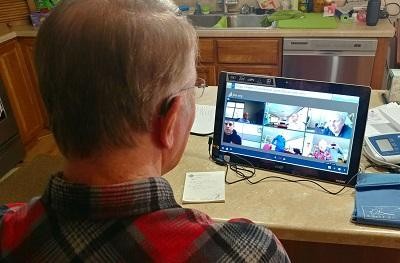By Josh Seidemann, VP of Policy, NTCA-The Rural Broadband Association
Social isolation among senior citizens has been found to play a role in depression, poor eating habits and other health indicators. Current recommendations and localized restrictions responding to Covid-19/coronavirus may intensify incidences of senior isolation. In Maryland, Governor Larry Hogan advised persons 60 and older to limit their activities outside their home, citing higher coronavirus risks for that age group.
Social services and health care professionals have emphasized the need to maintain social connectivity even in a period of social distancing. A U.S. Chamber of Commerce report found that broadband “fosters feelings of relevance and provides seniors with an interactive outlet to the world.” Social isolation and loneliness have been linked to high blood pressure, depression, obesity and cognitive decline. A National Institutes of Health (NIH) study found increased incidences of depression onset for both men and women who eat alone, compared to men and women who eat with others. Eating alone can also lead to malnutrition.
While these concerns are heightened and perhaps amplified at a time when the nation deals with coronavirus, the challenges of senior isolation will not evaporate at the end of the current health situation. Identifying at-risk seniors can be difficult. Ordinary encounters with family, physicians or others might not provide sufficient opportunity to inquire about potential feelings of loneliness. Health Affairs suggests leveraging existing resources such as Meals on Wheels volunteers to assess and assist senior citizens.
Rural broadband providers can also play a role in this effort. Last year, Nelson Communications Cooperative (Durand, Wis.) leveraged a Smart Rural Communities (SRC) grant to pilot a program aimed at mitigating senior isolation. And, Gardonville Cooperative Telephone Association (Brandon, Minn.) applied an SRC grant in 2016 to provide social and medical connectivity for hospice patients.
None of this should be surprising. Locally operated rural broadband providers enjoy an earned reputation for working with other community leaders to exploit (if not explode) the benefits of broadband to improve community services. Indeed, this is the bedrock ideal of the Smart Rural Communities program.
At another time, we can develop the numbers and statistic and case studies to demonstrate the empirical evidence of what we observe. But this is probably a good time to set aside the “No devices at the dinner table rule” and to find ways to connect, whether at mealtimes or others, with those who by reason of age or other need find themselves at a distance.
As we frequently say, broadband conquers distance. Let’s use it to shatter isolation.


